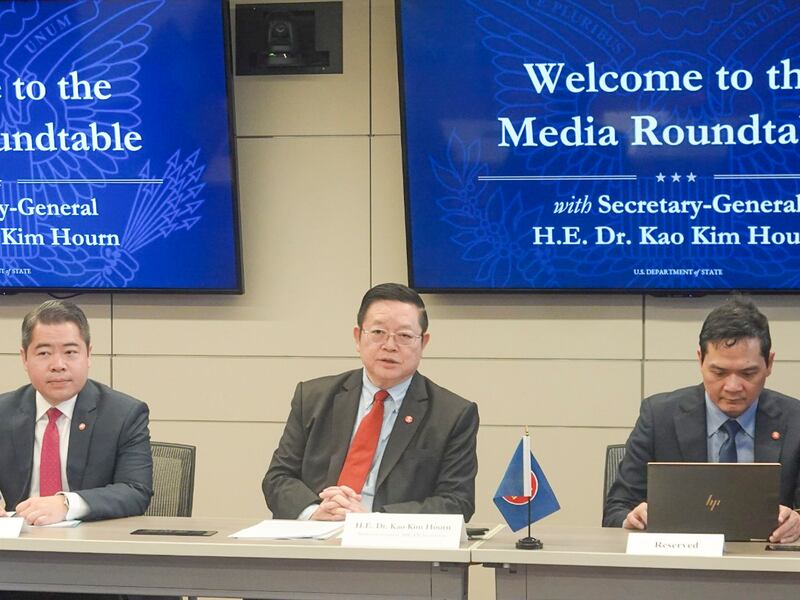Southeast Asia won’t pick sides in the strategic rivalry between the United States and China and believes both powers have a role to play in Asia, a top regional official said in Washington on Wednesday.
Speaking with reporters at Arizona State University’s Washington campus, Kao Kim Hourn, the secretary-general of the Association of Southeast Asian Nations, or ASEAN, said the 10-nation grouping wanted Beijing and Washington to “work out their differences.”
But until that happens, he said, Southeast Asia would work with both powers and oppose any efforts to be shoehorned into the rivalry.
“They should not ask us to choose sides. We will not choose sides,” said Kao Kim Hourn, who was an adviser to former Cambodian Prime Minister Hun Sen before taking on his role with ASEAN in 2022.
“This is a strategic competition between China and the United States,” he explained. “It's not a strategic competition with ASEAN.”

The ASEAN states hoped the rivalry “will not have repercussions” for Southeast Asia and wanted the sides to talk more to avoid economic or military blowback for the region, the official added.
“We want to see the superpowers get together,” he said.
Asked about remarks often made by Chinese government officials that the United States was an “outsider” in Asia and should focus on its own backyard, Kao Kim Hourn said many in ASEAN disagreed.
“We consider the United States as a friend and as a partner,” he said. “In this regard, I don’t think ASEAN considers the United States as an outsider. The U.S. has been involved in the region for many years.”
Earlier on Wednesday, Kao Kim Hourn visited students at Herndon High School, which he attended in the 1980s after escaping the Cambodian Civil War that followed the 1979 overthrow of the Khmer Rouge.
He also met with U.S. Commerce Secretary Gina Raimondo.
South China Sea
A day prior, Kao Kim Hourn held talks with U.S. Deputy Secretary of State Kurt Campbell, who on Wednesday publicly called on Southeast Asia to adopt a unified stance on assertive Chinese claims against Philippine waters, which has included water-cannon attacks.

ASEAN should “send an unmistakable message about concerns with respect to provocations in what is clearly the Philippines' waters,” Campbell said at a forum at the Stimson Center in Washington.
However, the bloc, which requires consensus among its 10 member states to issue positions, has been unable to offer a unified stance on China's claims to the South China Sea since Cambodia in 2012 hosted the group's annual summit and vetoed any such statement.
As a close ally of Beijing and one of its largest aid recipients – and with no claims itself to the South China Sea – Phnom Penh has since prevented the bloc from criticizing China's aggressive claims.
At the roundtable on Wednesday, Kao Kim Hourn noted that only four of the 10 ASEAN states – Vietnam, Malaysia, Brunei and the Philippines – had direct claims to the South China Sea, and said even within the bloc there were overlapping claims that needed to be resolved.
A Philippine official this week, for instance, said that Manila was "monitoring" island-building by Vietnam in a disputed part of the sea, even as he stopped short of condemning the land reclamation and said ties between Vietnam and the Philippines remain "friendly."

Kao Kim Hourn said ASEAN had to sort out the “counterclaims” that exist “among” its own members before it could adopt a unified regional stance on China’s overlapping claims – even if that meant allowing Beijing to press ahead with increasingly assertive behavior.
A long-awaited code of conduct governing how claimants behave in the South China Sea, which was first floated in talks with Beijing in the 1990s, could be at least another two years away, he added.
“They're trying to work within that time frame,” he said. “But, again, it depends on the speed and, of course, the process of negotiating.”
Edited by Malcolm Foster.
